1. Use scenarios
A large amount of event tracking data exists.
MaxCompute is not activated or you are not familiar with related operations.
2. Flowchart

3. Upload of user data, item data, and behavioral data
3.1. Baseline data
Use server Software Development Kits (SDKs) to upload baseline user data, item data, and behavioral data.
3.2. Incremental data
Use server SDKs to upload incremental user data, item data, and behavioral data.
3.3. Use of server SDKs
If you use Artificial Intelligence Recommendation (AIRec) SDK for Java, perform the following operations to use server SDKs:
a. Configure the environment before you use AIRec SDK for Java. For more information about the configurations, see SDK for Java.
b. Use AIRec SDK for Java to push data. For more information, see Push data.
c. Obtain recommendation results. For more information, see Obtain recommendation results.
For more information about how to use server SDKs for other programming languages, see the related topics that are under the nodes of the same level as the "SDK for Java" topic.
3.4. Parameters of tables pushed by server SDKs
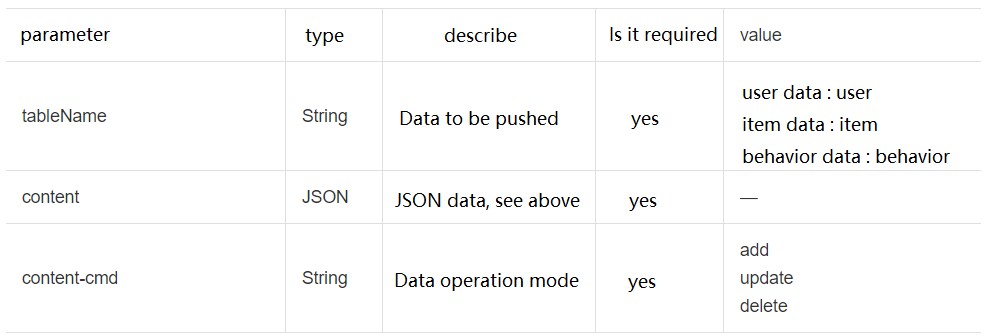
3.5. Details about data pushing
https://www.alibabacloud.com/help/doc-detail/101482.htm
4. Procedure
4.1. Select an industry template
Note: After you start an instance, you cannot change the selected industry.

4.2. Select a method to start an AIRec instance
Select Quick Start. Note: In this method, default data provided by AIRec is used to start an instance. After you start the instance, the data is automatically deleted.

4.3. Configure data sources
Select Upload Behavior Data by Server SDK.
4.4. Configure offline storage
You can specify an offline storage for your real-time data sources. You can write data in the real-time data sources to your self-managed MaxCompute or to MaxCompute configured for AIRec. This way, the data is hosted on AIRec.
If you enable the offline storage feature, offline data that is used for model training for AIRec is stored in MaxCompute that is activated by using your enterprise account. You must make sure that the offline data is stable and your enterprise account can use and maintain the data.
After you start an instance, you can view the partition information of offline storage tables on the Offline Storage page in the AIRec console.
Note:
1.The name of the offline storage project must be different from the name of the project whose data you used to start the instance.
2.Before you configure offline data sources, you must grant read and write permissions to AIRec in MaxCompute. For more information, see Grant permissions on offline storage to AIRec.
3.We recommend that you do not modify or delete the offline storage project, and enable auto-renewal for the project to avoid overdue payments.
4.After you start an instance, you can view the partition information of offline storage tables on the Offline Storage page in the AIRec console.
5.The current version of AIRec allows you to manage offline data by using the MaxCompute client.
The current version of AIRec supports all the operations in MaxCompute. Proceed with caution if you need to perform high-risk operations. For more information, see MaxCompute Documentation
6.Do not perform high-risk operations on offline data, such as adding, deleting, or writing data. These operations may lead to data calculation failures or affect the performance of data calculation.
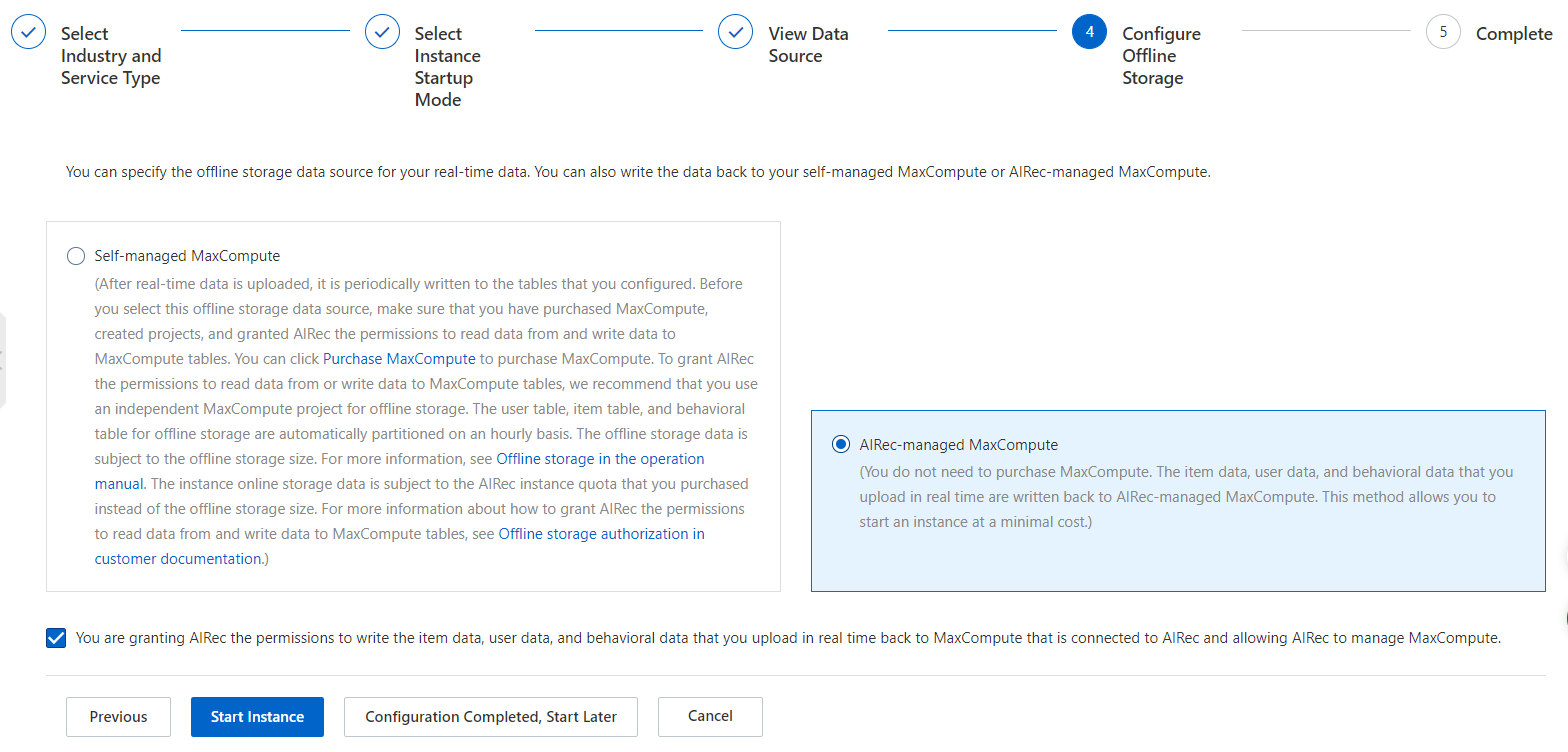
4.5. In the Instance Start Confirmation message, click OK. It takes about one and a half hours to start the instance.
View instance details
After the instance is started, you can view details about the instance.
4.6. Use server SDKs to upload data
Use server SDKs to upload incremental data. For more information about relevant operations, see "3.4. Parameters of tables pushed by server SDKs" and "3.5 Details about data pushing".
Note: You must first push item data and user data, and then push behavioral data.
4.7. User experience tests
In the returned result of a user experience test, you can perform one of the following operations: Click, Favorite, Add, and Buy. A behavioral data record is automatically generated in the background each time you perform one of these operations. These data records help you verify the test effect.
When you request test results again, the returned results vary based on the operation that you performed.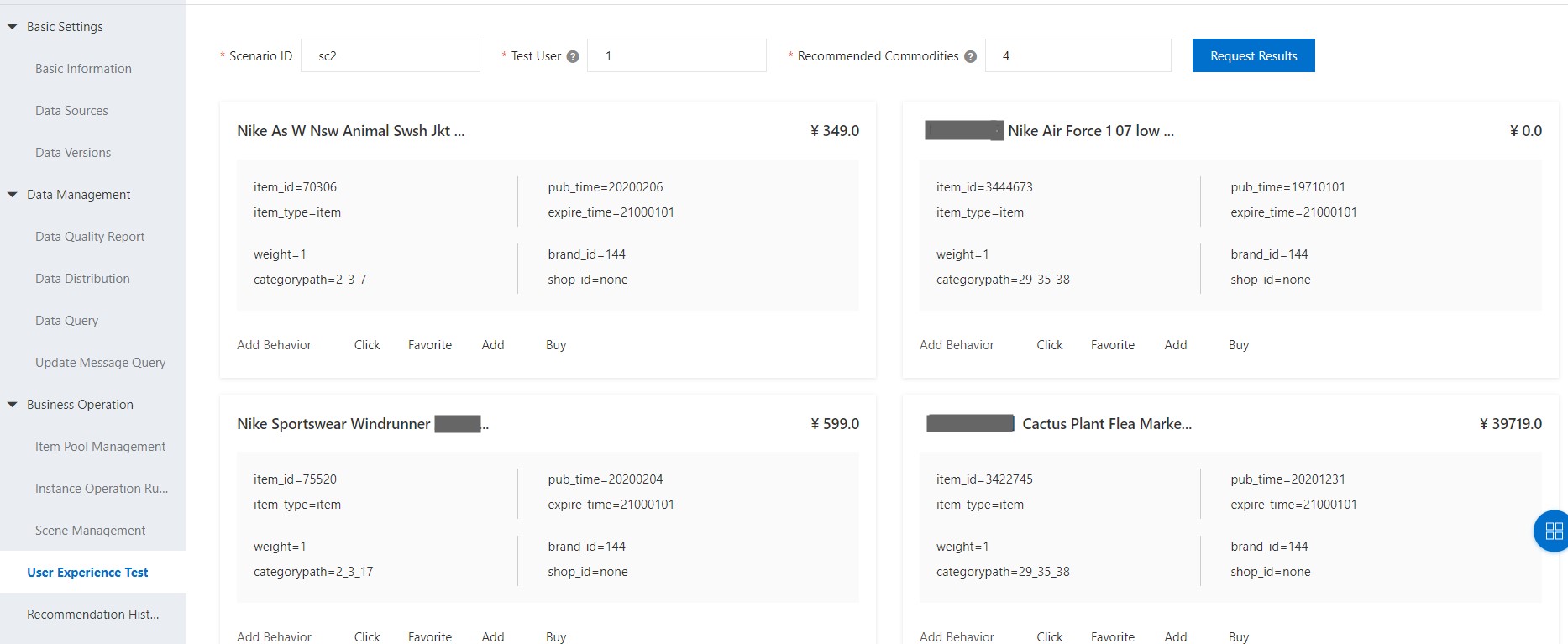
If you want to view details about test results, go to the Update Message Query page.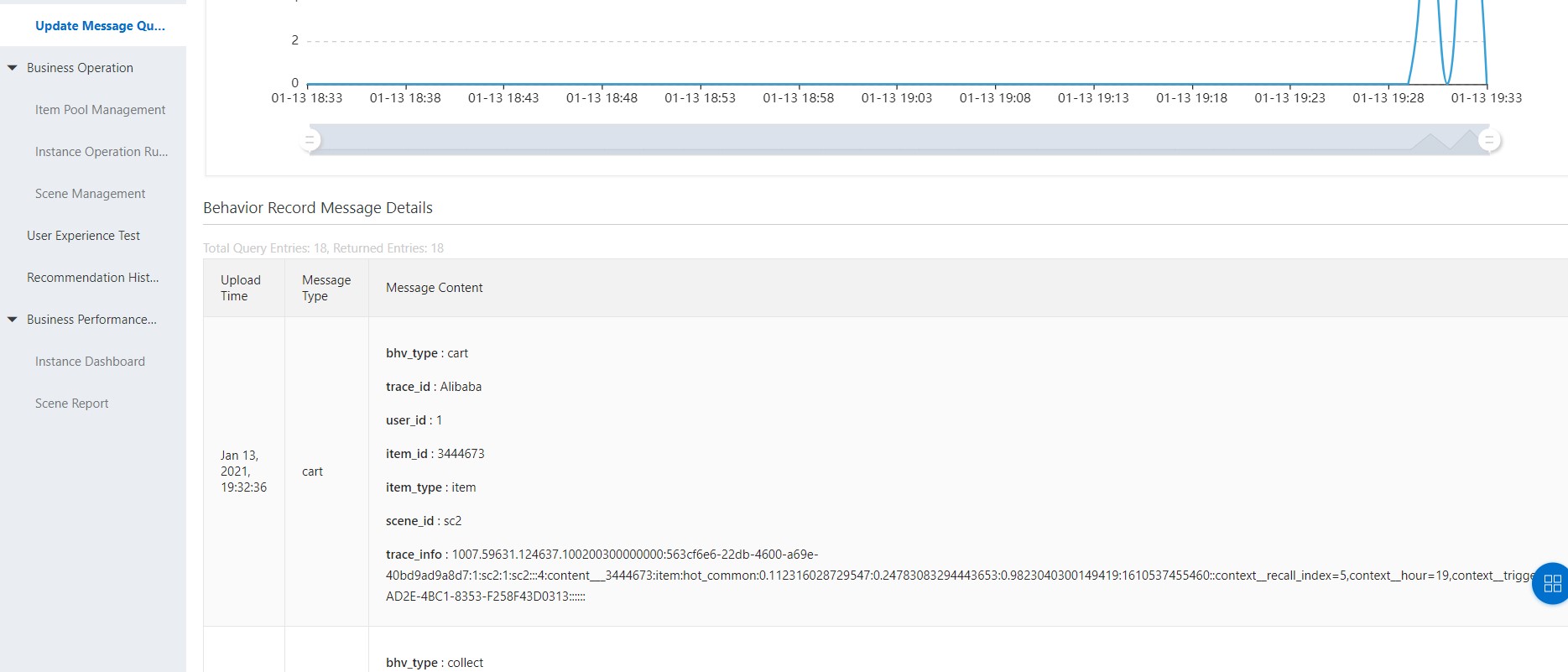
5. Industry template
The current version of AIRec allows you to enable the You May Also Like or Related Recommendations feature. On the Scene Management page in the AIRec console, you can create different types of services.
5.1. Create a scene
In the left-side navigation pane of the AIRec console, click Scene Management. On the page that appears, click Create Scene. 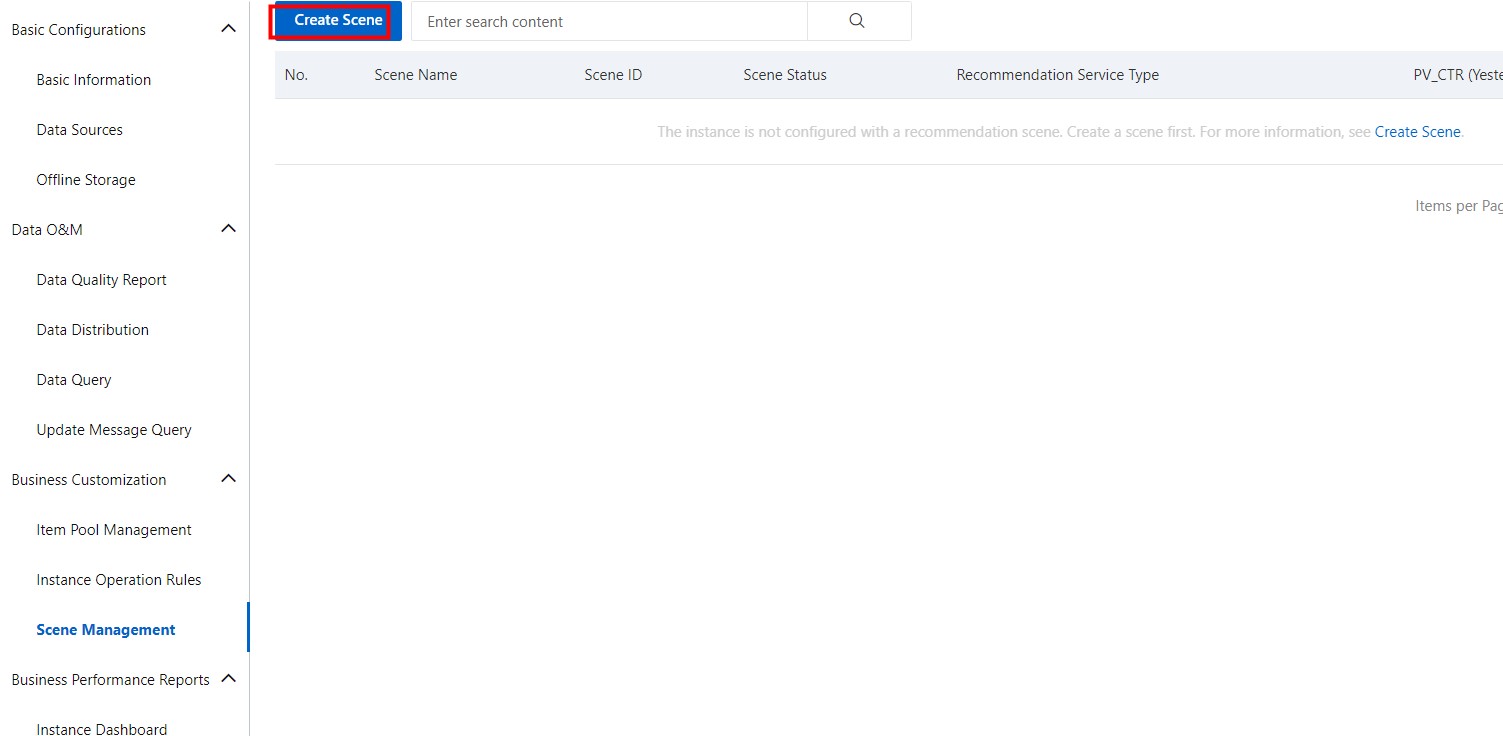
5.2. Select a recommended service type for the scene
On this page, you can select You May Also Like or Related Recommendations for this scene, specify the scene ID that corresponds to the scene_id parameter in the data specifications, and configure other parameters.
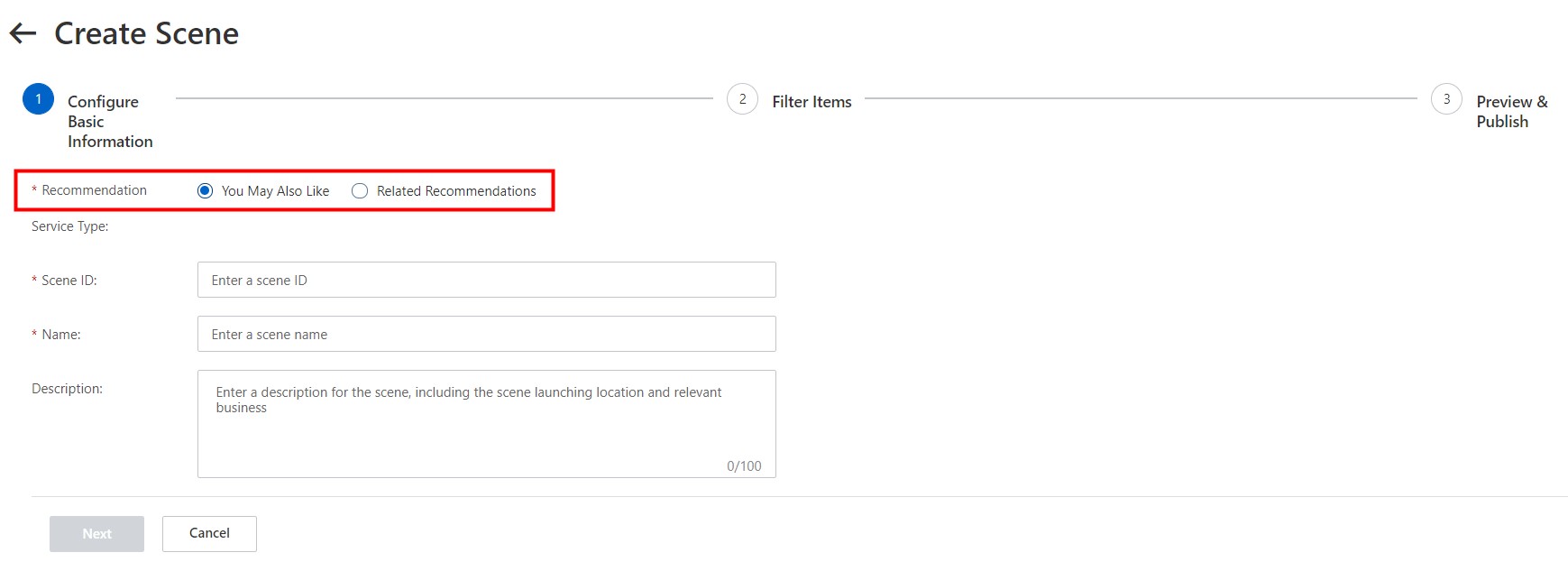
5.3. Lists of scenes
After you create a scene, you can view it on the Scene Management page. 